Baba the cat is not just a pet, but also a storyteller and a model for what is probably the most unique cat history book ever published. When Paul Koudounaris visited Los Angeles’ North Central Animal Shelter one afternoon in 2011, he didn’t intend to adopt the feline who would go on to become the inspiration for his book. But as he was leaving, a striped paw reached out from a wall of cages and caught his shirt. It belonged to a six-month-old brown tabby whose intent green eyes immediately communicated to Koudounaris that she was always meant to go home with him.
Baba, as Koudounaris called his new friend, became not only a beloved companion, but also the protagonist and model for his book, A Cat’s Tale: A Journey Through Feline History. Spanning thousands of years, from prehistory and ancient Egypt to the Enlightenment and the New World, the tome features heroic, tragic, heartwarming, and incredible stories of dozens of cats. Many of these characters, including Muezza (“Cherished”), the Prophet Muhammad’s companion, and Felicette, a Parisian alley cat sent into space in 1963, are among the most famous felines to ever exist. Others led notable lives but had been all but forgotten until Koudounaris rediscovered them. In addition to depicting specific cats in history, the book also tells the sweeping story of Felis catus’ overall journey throughout various historical eras.
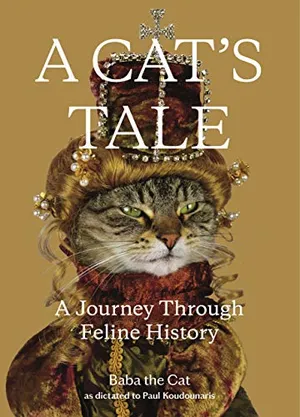
Felipe’s history is full of heroism, love, tragedy, sacrifice, and gravity. If you’re not convinced, don’t worry because Baba the Cat is here to share the true story.
/https://tf-cmsv2-smithsonianmag-media.s3.amazonaws.com/filer/76/2f/762f428e-d0f8-46a6-bdd0-e88536ba6f3c/roman_ch_3.jpg)
Julius Caesar utilized cats as a means of protecting Rome’s stores from vermin. These felines also accompanied imperial legions all the way to Britannia. Some Roman armies even adorned their shields with cat markings. This historical tidbit comes from Paul Koudounaris.
/https://tf-cmsv2-smithsonianmag-media.s3.amazonaws.com/filer/77/0d/770d6ddf-1498-478c-99d7-cf5677a40562/cowboy2_billy_the_kitten_ch_6.jpg)
The cowboys of old used to travel with their feline companions, which not only proved to be valuable mouse hunters but also loyal friends. The concept of cats as companions began to spread through the works of writers like Mark Twain and poet Cy Warmann. Paul Koudounaris’ A Cat’s Tale is just one of many books that delve into the history of cats, but what sets it apart is that it is told from the perspective of a cat. Baba acts not only as a narrator but also as a Cindy Sherman-like impersonator, appearing throughout the book dressed as historic individuals and caricatures. Baba’s voice and visage make Koudounaris’ take on the subject truly singular, mimicking oral storytelling more than an academic treatise.
Allowing Baba to carry the book also allows Koudounaris to make a larger point about the subjectivity of history, including which stories get told and whose point of view and agenda they convey.
“Ostensibly, it’s a feline history book, but it’s also at its heart something more: a challenge to history as being a homo-centric monologue,” Koudounaris says. Underneath Baba’s parrot-like sass and charm is “a plea to include other species that have been left out of history,” he adds. “We’re all in this together, and we’re all connected.”
The idea for the book, like the adoption of Baba herself, came about through a series of auspicious coincidences. Like any doting cat owner, Koudounaris enjoys taking pictures of Baba. Over time, his photos became more elaborate, incorporating background drops, lights, and teddy bear and doll clothes.
As Koudounaris, an art historian and author who specializes in the visual culture of death, coordinated increasingly complex photoshoots, he began to work on what he thought would be his next book: an exploration of pet cemeteries around the world. While researching the new project, however, he started accruing an unwieldy number of stories about amazing yet all-but-forgotten historic cats. Koudounaris knew he’d never be able to fit all these gems into a book about pet cemeteries, and in pondering a solution, he came up with the idea for A Cat’s Tale—a book that would highlight the fascinating history of cats in general by putting Baba front and center.
/https://tf-cmsv2-smithsonianmag-media.s3.amazonaws.com/filer/65/97/6597f09c-16da-411a-82c8-4cb4ffa7145c/cardinal_richelieu_ch_5.jpg)
Cardinal Richelieu, who served as the chief minister of France’s King Louis XIII, was known for his iron-fisted rule. However, he had a soft spot for cats and preferred to have at least a dozen around him at all times. One of Richelieu’s chroniclers wrote of him, “The mitered tyrant of France finds a human heart only when he is near the meowing breed.” Paul Koudounaris.
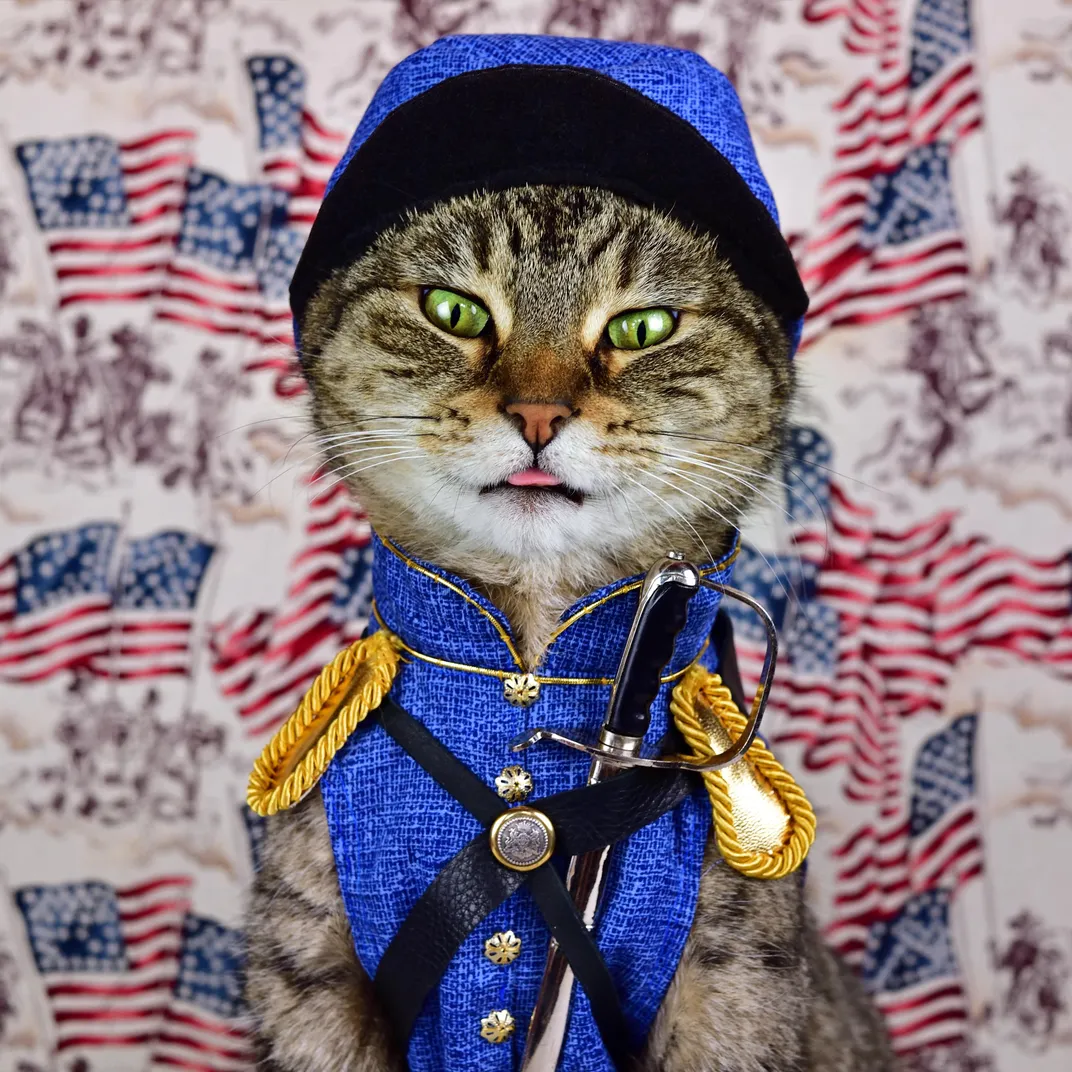
In the early 19th century, cats were a common sight in U.S. Army commissary storehouses, with an annual upkeep budget of $18.25 allocated for each cat on army premises. Paul Koudounaris, the author of “A Cat’s Tale,” describes his book as not just a book, but also a part of his continued bonding process with his cat. According to Koudounaris, the book is a love letter to all cats in our lives and comprises an exhaustive history of cats and our place in their lives.
Two distinct approaches were adopted while working on the book: finding appropriate costumes for Babba and combing through archives, libraries, and other sources to piece together a comprehensive history of cats. Creating the right costume proved to be the most challenging aspect of the photography part of A Cat’s Tale. Initially, Koudounaris relied on eBay, flea markets, and specialist vintage doll meetups. These hunts turned up everything from mini-17th century Puritan garb to a cat-sized Uncle Sam outfit, all of which Koudounaris tailored to fit Babba’s cat anatomy.
When some of the photographer’s visions proved too particular or complex to execute, he hired a friend, Desirae Hepp, who works on costumes for films. To craft samurai armor to illustrate a Japanese folktale about a military noble who called upon a famous cat to help dispose of a monstrous rat, Hepp repurposed an old wicker placemat. To fashion cat-sized Viking armor, she used a deconstructed human-sized helmet. “She’s a creative genius who likes weird projects,” Koudounaris says.
Dressing Babba and getting her to pose and assume the perfect facial expression was surprisingly easy. “Amazingly, like 99 percent of the time, she’d get exactly what I want,” Koudounaris says. Sometimes, she’d even nail it on the first shot. “With the Andy Warhol one, I did a test photo and was like, ‘Oh, that’s good—got it,'” he recalls.
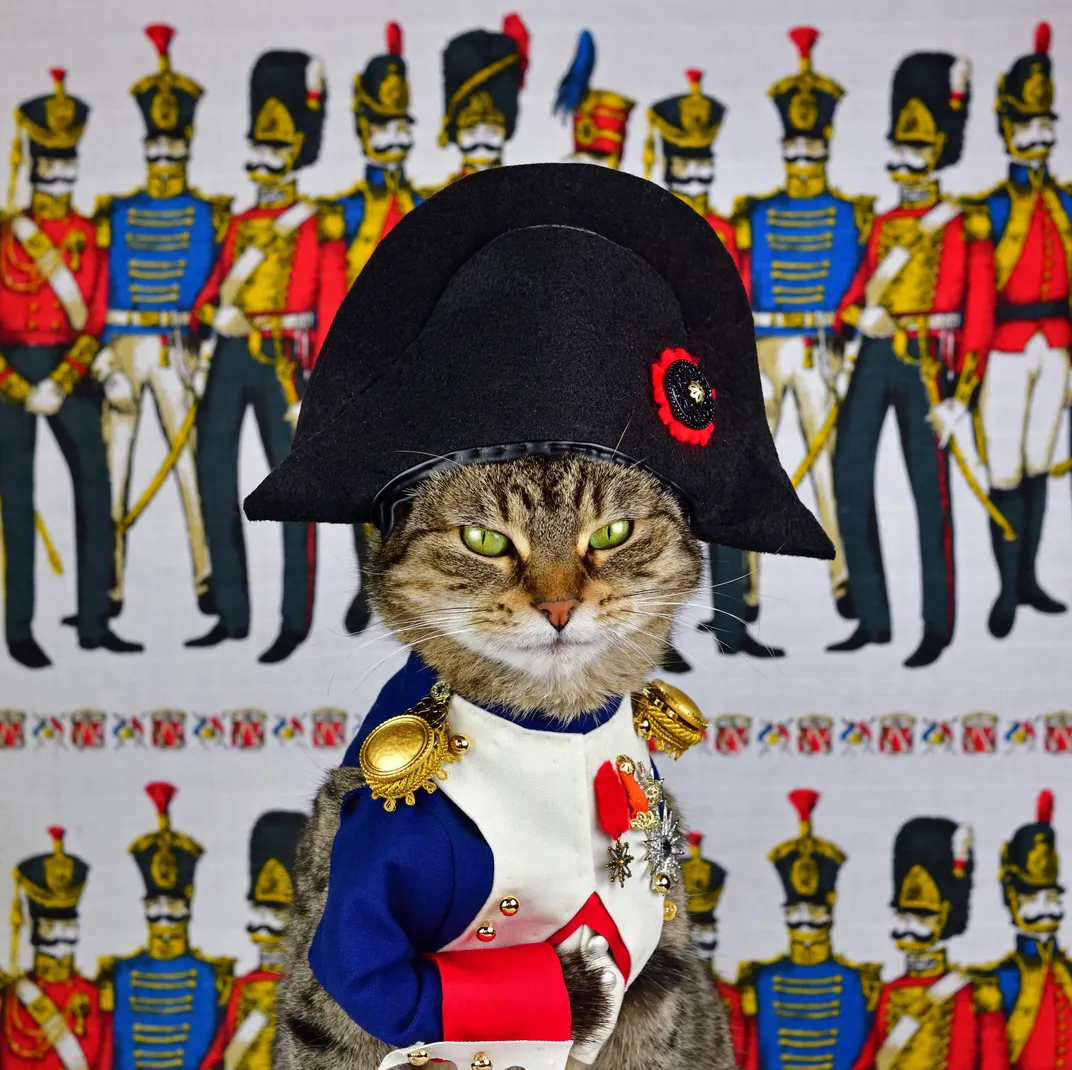
Napoleon Bonaparte had a strong dislike for cats and once stated, “There are two kinds of fidelity, that of dogs and that of cats.” He was against the idea of breeding cats as rat catchers on the streets of Paris and instead preferred to use poison, which unfortunately resulted in sickness among both humans and rodents. This information comes from Paul Koudounaris.
/https://tf-cmsv2-smithsonianmag-media.s3.amazonaws.com/filer/11/2c/112cfb7f-d73f-40d6-afab-7e05be7c7b73/andy_warhol_ch_6.jpg)
Andy Warhol, the famous Pop Art pioneer, used to own up to 25 Siamese cats at a time, with all but one named Sam. Before his rise to fame in 1954, Warhol published a book of lithographs featuring cats, which now sells for tens of thousands of dollars. Researcher Paul Koudounaris traveled around the world, from Wisconsin to Massachusetts and France to New Zealand, to explore the stories behind cats. In Tokyo, he delved into the history of Maneki-Neko, the 17th-century Japanese cat that inspired the ubiquitous raised-paw good luck cat. Meanwhile, in California, he researched Room 8, a gray tabby who appeared at a Los Angeles elementary school in 1952 and stayed for 16 years, becoming both the school’s mascot and the subject of a biography.
One of Koudounaris’ favorite discoveries was the Puss’N Boots Award, a long-lost prize given out by a California cat food company between 1950 and 1960. The first recipient was a black cat named Clementine Jones who made national headlines after she walked from Dunkirk, New York to Aurora, Colorado in search of her human family, which had moved and left her behind with relatives. “Up until the 1950s, cats were really second-grade animals to dogs, but that medal alone really changed American perception of cats,” Koudounaris said. While cats have firmly established themselves as pop culture icons and favorite pets, Koudounaris believes they still have much to say if only we give them the chance. Both Baba and Koudounaris end the book with an appeal to readers: to live history through the making with the special cat that shares their lives.
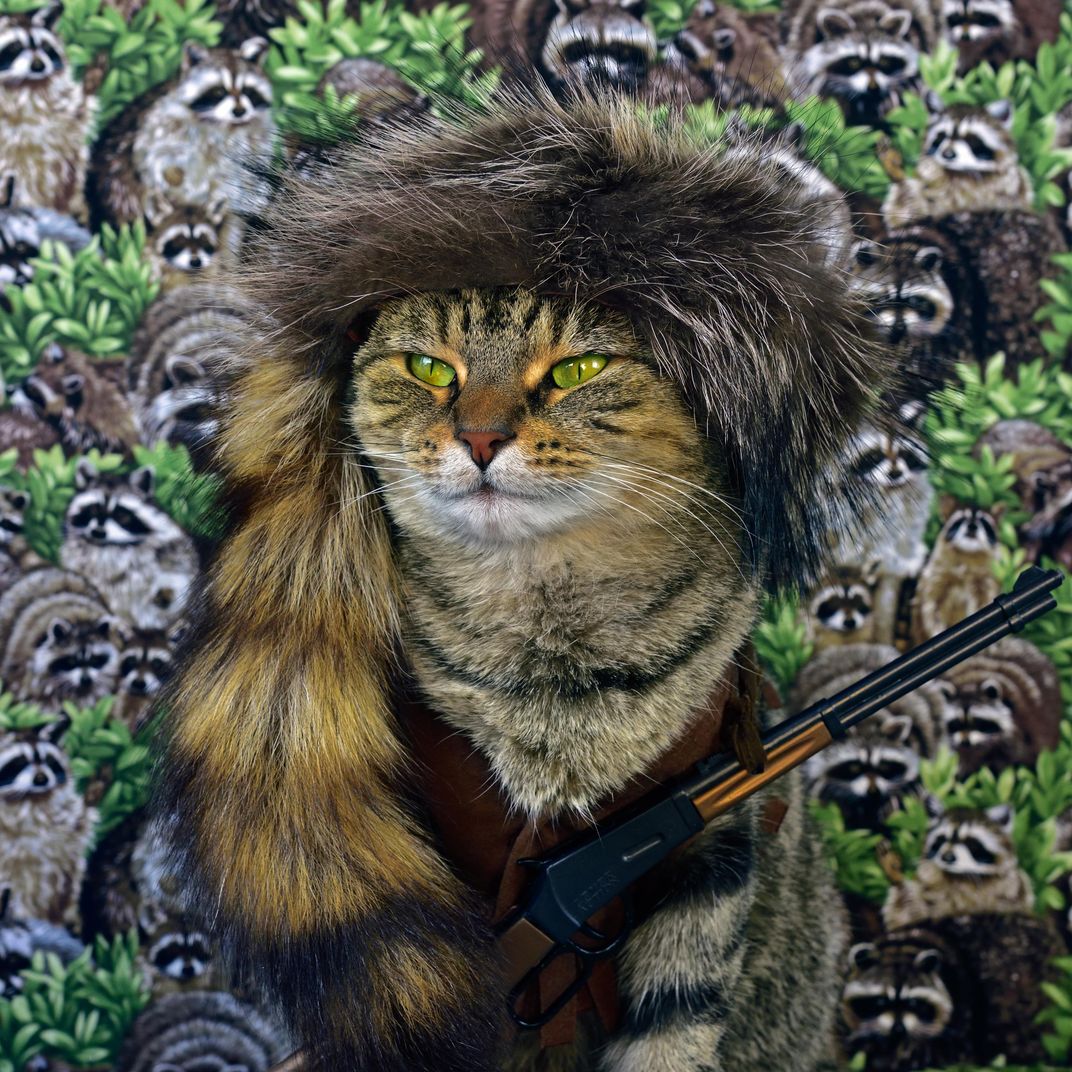
During the American frontier, cats were highly sought after but also very rare. Midwestern entrepreneurs would purchase cats in bulk and ship them to the Dakotas, tripling their money. In the 1880s, a cat in the Arizona territory sold for $10, a significant sum at the time, while in Alaska, felines were worth their weight in gold. These historical anecdotes demonstrate the value placed on cats during this era.
/https://tf-cmsv2-smithsonianmag-media.s3.amazonaws.com/filer/9d/e2/9de20442-cd60-48c0-8f8f-5e816b374c04/parisian_lady_ch_5.jpg)
During the 17th century in France, women of the court preferred to keep cats as companions over lapdogs, which was the fashionable trend at the time. Princess Elizabeth Charlotte, wife of Philippe I, Duke of Orleans, even declared that “cats are the most captivating animals in the world.” Paul Koudounaris.
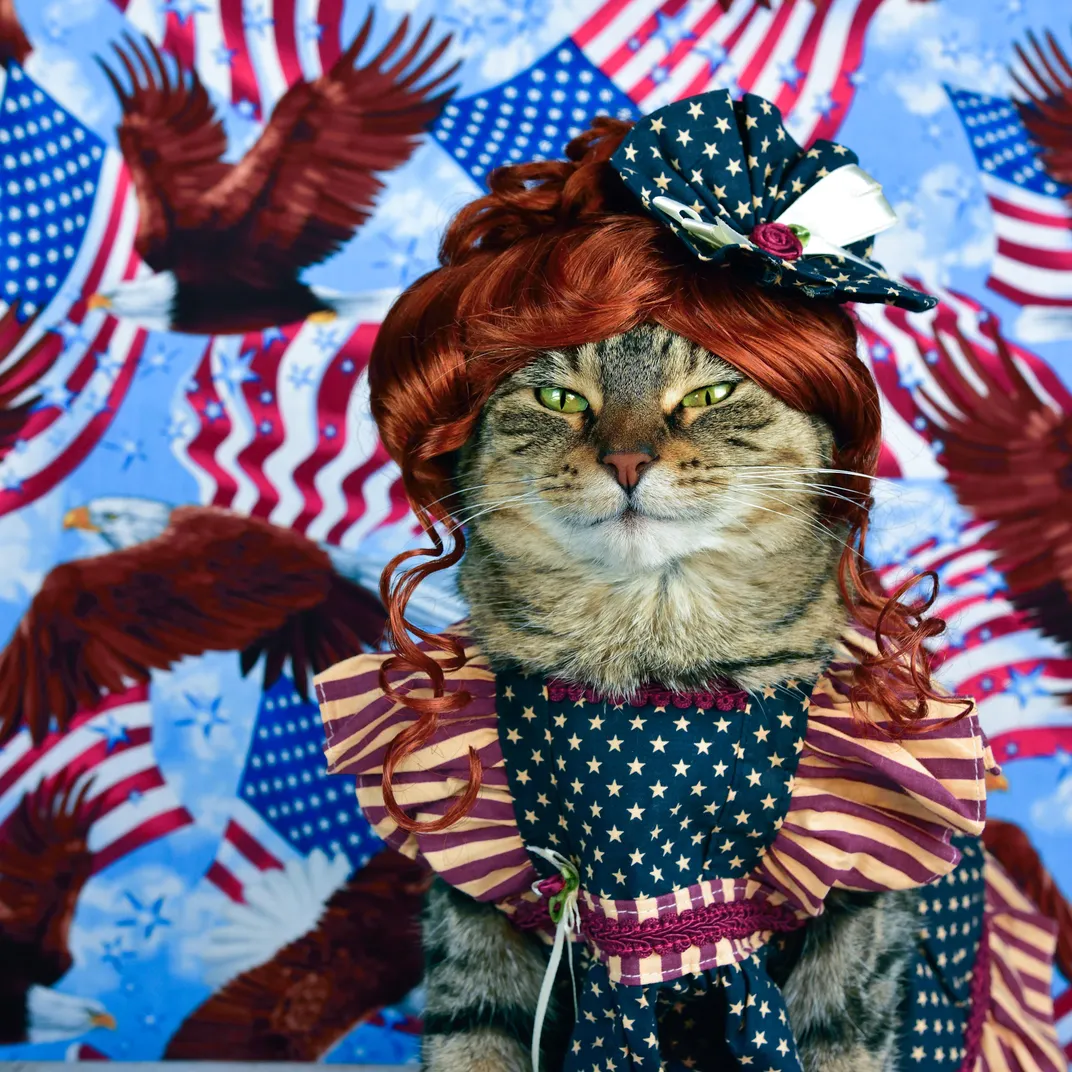
Not long after the American Revolution, the United States became the pioneer in allocating funds for cats in its budget. Approximately $1,000 per year was designated for postal cats, which were employed to control mouse populations. Funds were distributed to cities based on the volume of mail each place handled.
